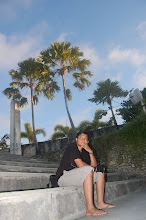Vanilla, the world's most prized flavor, is one of the most valuable treasures the Europeans brought back from the New World.
Like many spices in history, vanilla was once very expensive
It is believed, the Totonaca people of Mexico were the first cultivators of vanilla, during Mesoamerican times. They believed that the Gods had bestowed this exotic fruit upon them. Vanilla continues to be cultivated in the eastern portions of tropical Mexico.
 When Cortez landed his army in Eastern Mexico in 1519, he formed an alliance with the local Indians, who then helped lead the Spanish troops against Montezuma and his Aztec empire. Montezuma royally welcomed Cortez with a vanilla-cocoa brew. This drink, chocolatl, was concocted from cocoa beans, ground corn, honey and Tlilxochitl (vanilla pods). Cortez took Montezuma's life and his treasures, including the secret of vanilla, which was brought back to the Old World. For several hundred years thereafter, cured vanilla beans were imported from Mexico to Europe for the production of vanilla flavor and perfume. Although the Spaniards had this supply of cured beans, they did not have the complete secret of how to grow and cure vanilla. It was over a hundred years before the Europeans could successfully cultivate the vanilla plant in greenhouses. Propagation through cuttings was somewhat successful in the early 170Os, although the plants seldom flowered and never produced fruits.
When Cortez landed his army in Eastern Mexico in 1519, he formed an alliance with the local Indians, who then helped lead the Spanish troops against Montezuma and his Aztec empire. Montezuma royally welcomed Cortez with a vanilla-cocoa brew. This drink, chocolatl, was concocted from cocoa beans, ground corn, honey and Tlilxochitl (vanilla pods). Cortez took Montezuma's life and his treasures, including the secret of vanilla, which was brought back to the Old World. For several hundred years thereafter, cured vanilla beans were imported from Mexico to Europe for the production of vanilla flavor and perfume. Although the Spaniards had this supply of cured beans, they did not have the complete secret of how to grow and cure vanilla. It was over a hundred years before the Europeans could successfully cultivate the vanilla plant in greenhouses. Propagation through cuttings was somewhat successful in the early 170Os, although the plants seldom flowered and never produced fruits.Plants were started in tropical regions, including Indonesia, also with no fruit. Eventually, in 1836, a botanist noted that the flowers needed to be individually hand pollinated in order to fruit. In Mexico, this may have been done naturally by bees, hummingbirds and/or a species of leaf-cutting ant. There is no experimental proof that any insect is actually effective in pollinating the vanilla flowers.
By the mid 180Os improvements in the human handpollination techniques had been developed which led to successful vanilla plantations in Madagascar, Reunion, Mauritius, the Seychelles Islands, Tahiti, the Comoros Islands, Ceylon, Java, the Philippines, and parts of Africa.
By the 19th century more vanilla was being grown in Madagascar and tropical Asia than in Mexico, breaking the monopoly enjoyed by Mexico for over 200 years. Mexico continued to be a major producer of vanilla beans until the mid-1900s.
Vanilla grows on a vine and is the fruit of a flower called the Vanilla plan folia. While native to Mexico, today there are 3 other regions that produce vanilla beans. Madagascar is the largest producer, and beans from this region are known as Madagascar Bourbon vanilla, which refers to the Burbon islands where they are grown. The second largest producer is Indonesia. The vanilla from this area is not as sweet as the Madagascar vanilla and not as desirable. The remaining 10 percent of vanilla comes from Mexico and Tahiti.






0 komentar:
Post a Comment